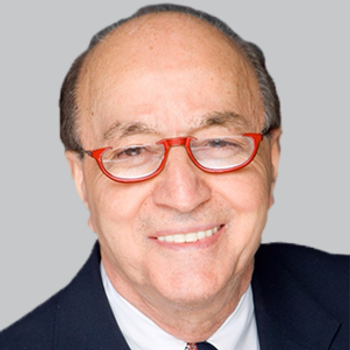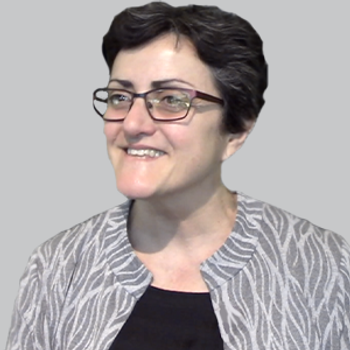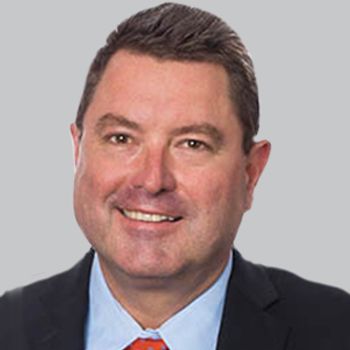
The director of the MedStar Georgetown Headache Center and associate professor of neurology at MedStar Georgetown University Hospital discussed the ongoing efforts in drug development and what the ideal future may hold for migraine medicine.

Matt Hoffman, Editorial Director for NeurologyLive, has covered medical news for MJH Life Sciences, NeurologyLive’s parent company, since 2017. He executive produces the NeurologyLive Mind Moments® podcast, and hosted the Medical World News show Deep Dive. Follow him on Twitter @byMattHoffman or email him at [email protected]

The director of the MedStar Georgetown Headache Center and associate professor of neurology at MedStar Georgetown University Hospital discussed the ongoing efforts in drug development and what the ideal future may hold for migraine medicine.

The professor of emergency medicine at the University of Wisconsin-Madison School of Medicine and Public Health discussed the impact that telemedicine, conducted in senior living communities, can have on emergency department visits for individuals with dementia.

The findings of a pair of recent studies have suggested that the presence and chronicity of hyper- and hypotension in mid- and late-life increases the risk of incident dementia, and that intensive blood pressure intervention can, although modestly, impact cerebral small vessel ischemic disease.

The pediatric neurologist and epilepsy specialist at Children’s Hospital Colorado spoke about patient interest in cannabidiol after the FDA approval of Epidiolex, and what remains to be done to perfect its use in epilepsy.

Jeffrey Dayno, MD, chief medical officer of Harmony Biosciences, as well as John C. Jacobs, the chairman and CEO, shared their insight into the potential impact pitolisant can make in the treatment of narcolepsy and excessive daytime sleepiness.

While both 18F-FDG and 18F-florbetapir can discriminate those with dementia from healthy controls, the correlation to cognitive scores are much stronger with 18F-FDG.

With its FDA approval, the selective histamine 3 receptor antagonist/inverse agonist, branded Wakix, is the first and only therapy for narcolepsy which is not scheduled as a controlled substance by the DEA. It is expected to enter the market by Q4 2019.

The director of the division of neurology and headache medicine specialist at Cincinnati Children’s Hospital offered insights on the updated pediatric migraine guidelines recently issued by the AAN and AHS.

The American Academy of Neurology and American Headache Society have released 2 sets of guidelines regarding the acute and preventive treatment of migraine in children and teenagers, with a focus on shared decision-making, patient education, and needs for future research.

The director of the University of Southern Florida’s Parkinson's and Movement Disorders Center spoke to the current Parkinson disease therapy landscape and what he learned from a recent survey of patients and caretakers.

Using principal component analysis, the findings suggest that CAG repeat length strongly predict the rate of cognitive-motor decline in patients with Huntington disease, with higher CAG resulting in earlier and faster decline.

Although the biomarker was associated with disease activity, its prognostic value on the individual patient level is still limited per these 10-year data of more than 600 patients with multiple sclerosis.

The director of the University of Southern Florida’s Parkinson's and Movement Disorders Center shared insight into the current focus on the nonmotor aspects of Parkinson care and the findings of a survey of patients and caregivers.

The early career fellow in the Center for Health Equity at the Melbourne School of Population and Global Health at the University of Melbourne offered insight into the critical need for research and efforts to increase smoking cessation in those with multiple sclerosis.

The neurologist at Cedars-Sinai Medical Center shared insight into the PKG’s use and what the wearable monitoring device can provide to physicians who treat patients with Parkinson disease.

Initial data from a feasibility study conducted with Apple devices and digital apps has shown the potential for these to be able to differentiate people with mild cognitive impairment and mild Alzheimer disease dementia.

Exposure to the care of either a neurologist or comprehensive epilepsy program epileptologist resulted in a significantly lower rate of premature mortality than that of those who were not, based on findings from a cohort of more than 20,000 cases.

New study findings confirm that idiopathic rapid‐eye‐movements sleep behavior disorder and RBD secondary to narcolepsy type 1 can be identified via video‐polysomnography and skin biopsy for phosphorylated α‐synuclein deposits.

The Rare Disease Cures Accelerator-Data and Analytics Platform, aimed at accelerating the development of new therapies, will launch at a joint meeting between the Critical Path Institute and the National Organization for Rare Disorders on Tuesday, September 17 in Bethesda, Maryland.

The director of multiple sclerosis neuropsychiatry at Brigham and Women’s Hospital discussed how a collaborative approach can help to address mental health disorders in patients with multiple sclerosis.

The director of headache medicine and chief of general neurology at Yale Medicine spoke about the significance of having CGRP inhibitors in the armamentarium, and how therapies like eptinezumab can improve patients’ belief in their physician’s ability to help.

The professor of neurology at University Medical Center Schleswig‐Holstein, and member of the department of neurodegenerative diseases at University Hospital Tübingen shared insight into the quantitative gait characteristics measured by wearable devices which can play an important role in the identification of prodromal Parkinson disease and its progression.

The findings demonstrated that the galcanezumab group—made up of those with both chronic and episodic migraine—experienced a 4.1-day reduction in monthly migraine headache days compared to a 1.0-day reduction with placebo.

The staff neurologist at Cleveland Clinic’s Mellen Center for MS shared her insight into the use of telemedicine in an outpatient setting across a number of subspecialties in neurology and how it can supplement care going forward.

The director of the Pediatric Stroke Program at CHOP spoke about the need to improve early recognition of pediatric stroke and physician awareness of the condition, which many believe is underdiagnosed and underestimated.

The professor of neurology and founding chair of the John T. Macdonald Foundation Department of Human Genetics at the University of Miami discussed the distinctions between Alzheimer disease risk of ethnicities that share genetic markers.

Patients who received diroximel fumarate experienced statistically significantly fewer number of days of key gastrointestinal symptoms with intensity scores ≥2 on the IGISIS compared to those on dimethyl fumarate.

One year post-launch, the Ambry Genetics and Akcea Therapeutics hereditary ATTR amyloidosis testing program has been used by more than 700 physicians. The free test screens for up to 81 genes that cause hereditary polyneuropathies and up to 92 genes associated with hereditary cardiomyopathies, including hATTR amyloidosis.

At usual-speed walking, a number of domains of gait variability, pace, asymmetry, and postural control were significantly predictive of conversion to Parkinson disease, and could be used in combination with markers to identify prodromal disease and its progression.

Investigators found reductions in tic frequency and increases in the number of tic-free intervals when children were merely asked verbally to suppress their tics, and when an immediate and contingent reward was delivered for successful tic suppression, tic suppression was enhanced.